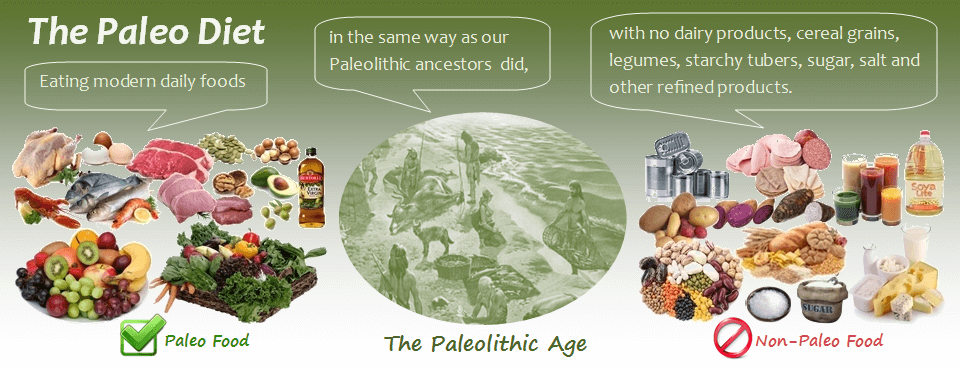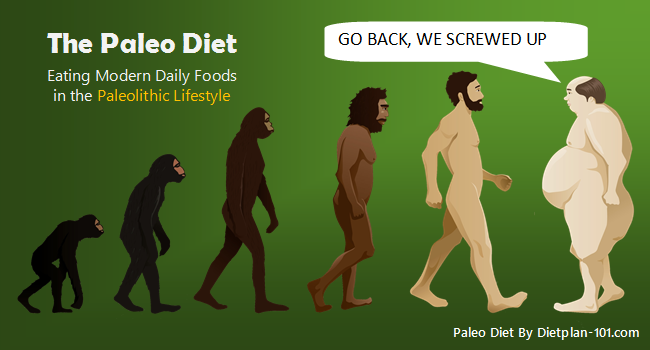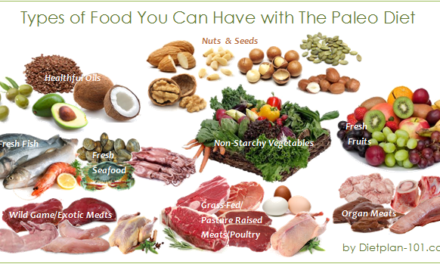What is the Paleo Diet?
The Paleo diet is based upon the basic concept that the optimal diet should be the one to which we are genetically adapted. It is a way of eating which is to consume the foods available to our ancestors before the Neolithic age, i.e. before the development of agriculture.
The diet of our Paleolithic ancestors, the hunter-gatherers, was devoid of dairy products, cereals, sugar, salt, and other refined products. So, the Paleo diet is a kind of diet that involves food items derived straight from nature, without any modification.
The Paleo diet encourages a higher intake of proteins and fibers, and a moderate to a higher intake of fat, but a lower intake of carbohydrates. There is no calorie counting or limitation of the amount of food intake.
The founder of the Paleolithic movement is Loren Cordain, Ph.D., the world’s leading expert on Paleolithic diets. In his popular book, The Paleo Diet, he claims that by eating in the way of our Paleolithic ancestors, we will be able to lose weight as well as prevent and treat modern-day illnesses such as heart disease, cancer, osteoporosis, diabetes, and many other health problems.
Check out foods in the Paleo diet to prepare your next meal.
The Main Characteristics of The Paleo Diet
The Paleo Diet is based on modern daily foods which resemble the food groups of our Paleolithic hunter-gatherer ancestors with no agricultural products. There are 7 main characteristics of this modern-day Paleo diet:
Higher Protein Consumption
Proteins make up 19-35% of daily calorie intake. The main sources of protein are meat, seafood, poultry, and other animal products. Proteins are essential for the growth and repair of body tissues. They are made up of amino acids that are necessary for this growth and repair.
Lower Carbohydrate Intake (mainly low GI)
Carbohydrates make up 35-45% of daily calorie intake. The main sources of carbohydrates are non-starchy fruits and vegetables, which mainly have low glycemic indices that will not raise blood sugar levels quickly. Carbohydrates help your body get energy from food by providing glucose to fuel your physical activity and a reserve when it’s needed most.
Higher Fibre Intake
The dietary fiber which is important for good health is mainly obtained from non-starchy vegetables and fruits, which have more fiber than whole grains. Fiber is an essential component of a healthy diet. It helps to support digestive health, keeps you feeling full and satisfied, and it supports heart health by lowering your cholesterol levels.
Higher potassium but lower intake
Fresh, unprocessed foods have higher potassium than sodium. Potassium is important for the body’s organs to function well. Low potassium and excessive sodium are associated with some health problems such as high blood pressure and heart disease.
Moderate to higher fat consumption
The fats are mainly monounsaturated and polyunsaturated (Omega-3 and Omega-6 fatty acids) fats. Daily diets should include more healthful monounsaturated fats. The intake of Omega-3 and Omega-6 polyunsaturated fatty acids should be in a good balance. A good ratio of Omega-3 and Omega-6 would be at around 1: 1 to 1: 3. Trans fats (partially hydrogenated oils) are cut out from the diet.
Higher vitamins, minerals, antioxidants, and plant phytochemicals intake
Free-range meats are rich in vitamin B12 and vitamin A, and fresh fruits and vegetables are rich in phytochemicals, vitamin C, and vitamin A. Phytochemicals are natural, plant-based chemicals that can interact with our cells in a similar way to vitamins and antioxidants.
Net dietary alkaline load diet
Eat plenty of fruits and vegetables (which are alkaline-forming) to offset the acid formed by the digestion of meats and fish and maintain the net alkaline load. A prolonged excessive dietary acid may lead to loss of bone and muscle mass, as well as other health problems such as high blood pressure and kidney stones.




